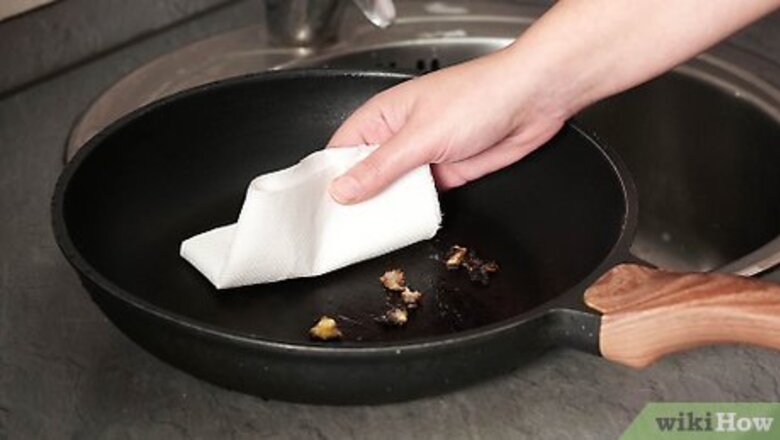
views
Cleaning Teflon Pans After General Use
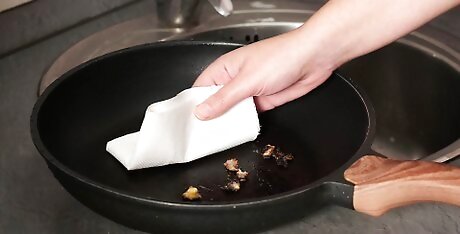
Remove any loose food. When has cooled down and is safe to touch, use a paper towel, wooden, or plastic spatula to remove off any loose food from the pan. Be sure to use a pot holder to hold the pan handle if the pan is still a bit warm. Be sure to use a non-metal utensil on your Teflon surface. Metal utensils can scratch and remove the Teflon layer on your pots and pans. If you are saving the rest of the food in the pan, use your non-metal utensil to sweep the food into a container that you can store later.
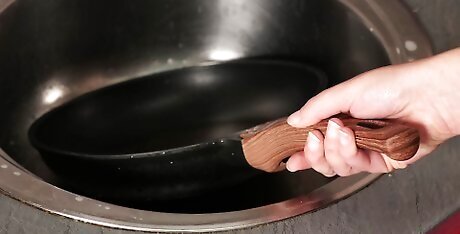
Put the pan in your sink. Wait until the pan cools down to insert the pan into your sink basin. Depending on the size of the sink, the pan may be able to fully fit in the sink, or it may stick out a little bit. Since you will be holding and rotating the pan as you wash it, it’s okay if the pan doesn’t fit completely in the sink basin. Turn on the sink faucet, and run warm or hot water. The pan will be cool enough to handle with your hands when you can comfortably touch the pan and not burn your hand. Keep in mind that cleaning cookware is sometimes easier when the cookware is still warm. However, the cookware still needs to be cooled down enough to safely touch with your hands.
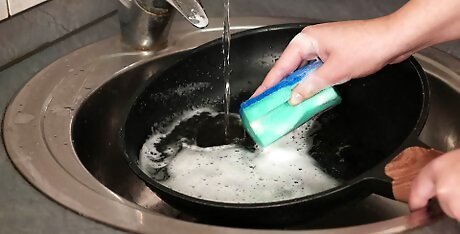
Wash the pan. Use a soft nylon scrubber, sponge, or paper towel sprinkled with a few drops of dishwashing soap to wipe the Teflon surface clean. Be sure to wipe all areas on the inside of the pan, but also wipe down the outside bottom of the pan and the pan handle. Rinse off all soapy residue from the pan. Do not use abrasive cleaning pads on Teflon pans. The abrasive material can damage and remove the non-stick coating of the pan. Since Teflon is used mainly for cookware, these cleaning directions can be applied to a wide variety of Teflon coated cookware. These cleaning directions aren’t solely restricted to Teflon coated pans.
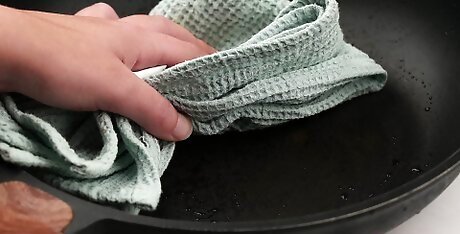
Dry the pan. Use a paper towel, dishrag, or drying rack to dry the Teflon pan. That way, the pan is ready to use again, or ready for storage.
Removing Food Residue From Teflon Pans
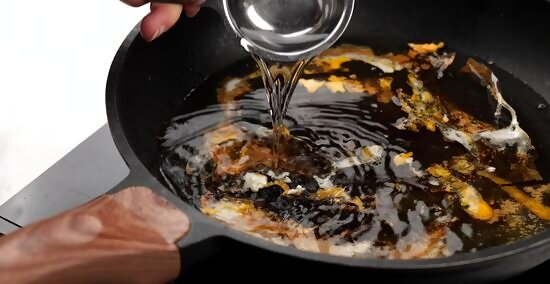
Add water and vinegar to the pan. If you have an oily layer and some food particles cooked onto the Teflon surface, wait for the pan to cool, and fill up the pan about half way with water. Then, add about ½ cup of vinegar to the pan.
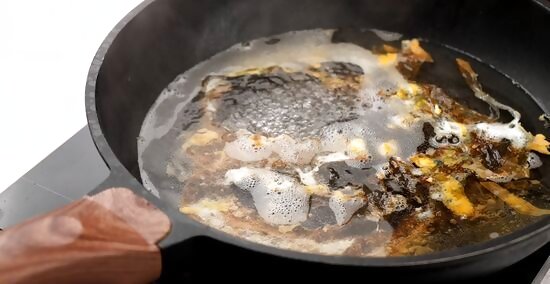
Boil the water and vinegar. Place the pan on a stove burner, and bring the water and vinegar to a boil. This may take somewhere between 5-10 minutes depending on how high you put the flame. As the water and vinegar gets hotter and starts to boil, the oil and food particles will begin to rise to the surface of the water in the pan.
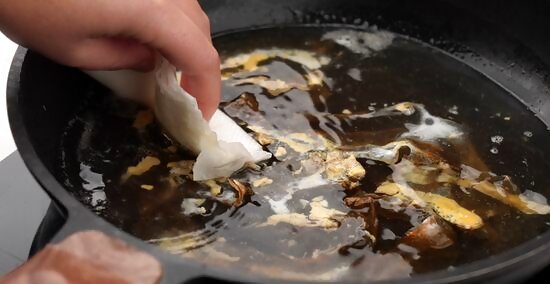
Collect the oil. Once the oil has risen to the surface, turn off the flame, and use a bunched up paper towel to dab at the pools of oil. The water will be very hot, so be very careful not to touch the water as you collect the oil. Once you have collected most of the oil on the paper towel, dispose the paper towel. If there are any floating food particles, use a perforated plastic spoon to collect the food, and throw it in the garbage. It’s recommended to use a perforated plastic spoon so you can collect the food particles while letting the hot water drain from the spoon. When all the food debris is removed, carefully pour the rest of the water down the drain.
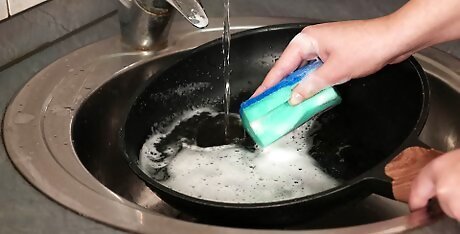
Wash the pan. Let the pan sit in the sink and cool down before you start washing it. To cool the pan down quickly, you can try running cool to lukewarm water on the pan about a couple of minutes. Use a soft nylon scrubber, sponge, washcloth, or paper towel with a few drops of dishwashing soap to gently clean the pan in your kitchen sink. Gently rub the pan surface to remove any food particles that may still be stuck to the pan. Thoroughly rinse the pan with clean water to remove any remaining soap.
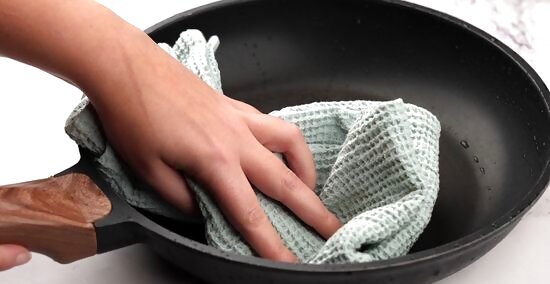
Dry the pan. Use a drying rack, or some sort of towel to wipe down and dry the pan completely. The pan will be ready for another use, or to be stored for later use.
Cleaning Burned-On Food From Teflon Pans
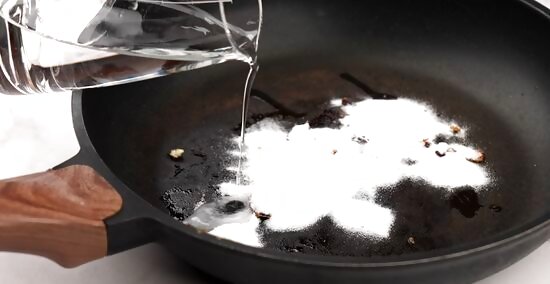
Cover burnt areas with baking soda. Once the pan has cooled from cooking with it, pour a small amount of baking soda on the areas of that pan covered with burned food. Then add a small amount of water to the baking soda piles, and allow the pan to sit overnight. The baking soda and water should look like a paste mixture.
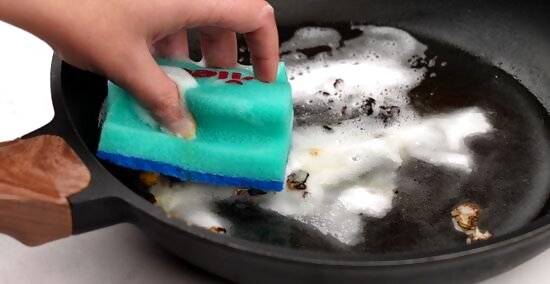
Scrub off the residue. After allowing the pan to soak overnight, scrub the pan with a soft, nylon scrubber or sponge to remove the burned food. The food should come off the pan rather easily, but if there are any stubborn areas, try using a bit more pressure to scrub off the food.
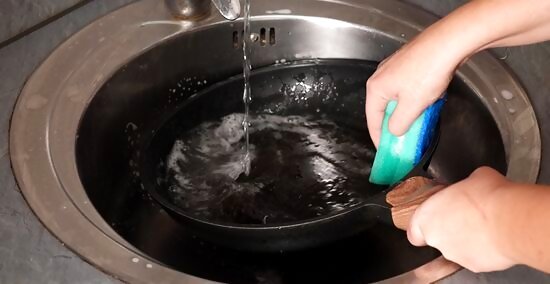
Wash the pan normally. Once the burned food is removed from the pan, wash it in the sink as you usually would. Use warm to hot water, a soft nylon scrubber or sponge, and a small amount of dishwashing soap to wipe and clean all areas of the pan. Rinse the pan with clean water to remove and soap or food residue.

Dry the pan. Use a dishtowel, paper towel, or drying rack to dry off the pan. Once the pan is dry, it’s ready to be used again for cooking, or stored for later use.


















Comments
0 comment